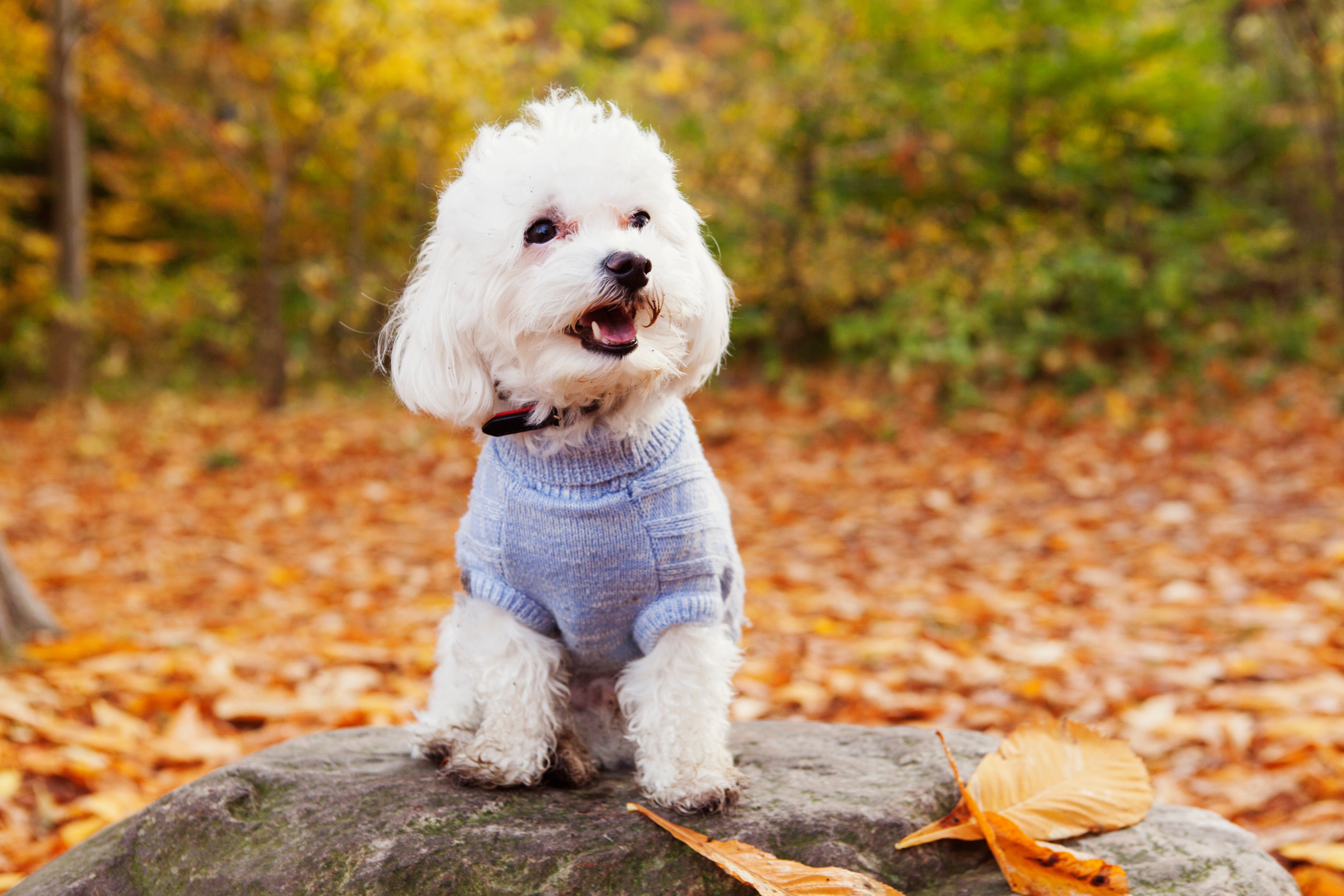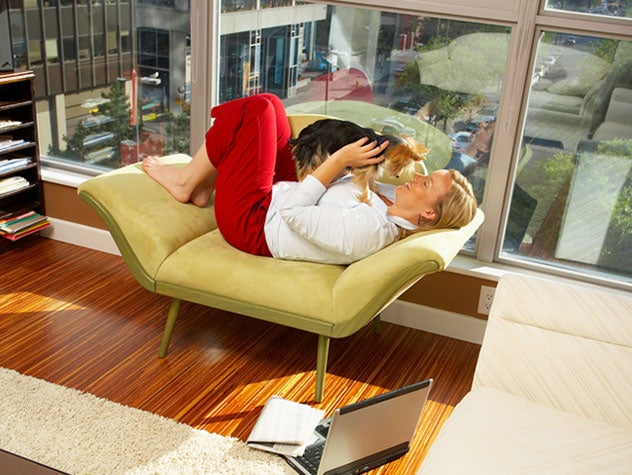Bichon Frise
The Bichon Frise’s striking, bright white appearance is thanks to its double coat, which has a soft and dense undercoat and a coarser, curlier outercoat. The result is a look that would give Curly Sue a run for her money. This merry, happy-go-lucky breed with a charming and inquisitive face makes a great family dog, although one that has a high grooming price tag.
Breed characteristics carousel
Learn More
Need to Know
- Dog suitable for non-experienced owners
- Basic training required
- Generally healthy breed
- Enjoys gentle walks
- Small dog
- Minimal drool
- Chatty and vocal dog
- Barks and alerts to visitors/anything unusual
- Could have issues with unknown dogs but gets along with known dogs
- Gets along with other pets with training
- Great family dog
- Needs a small yard or can happily live in the city
- Can be left alone occasionally with training
- AKC Registered Breed

Personality
Like your friend who keeps asking you to work out at 5 am, the Bichon is eager, perky, and full of energy. They are endearing companions to humans and other pets alike and are very good with children. Sensitive little souls who want to please their owners, are responsive and alert, always looking for an opportunity to play. They don’t like to be alone and could bark excessively if they are.
While you might think this is exclusively a French dog (The “e” at the end of the name is often pronounced the French “é”), the Bichon Frise breed has roots in the wider Mediterranean. It’s a result of crossing the water-loving Barbet with smaller white dogs. There are four types of Bichons: The original Tenerife, the Bolognese, the Maltese, and the Havanese. The Tenerife breed began in the Spanish Canary island of Tenerife and was brought to Italy in the 14th century by sailors where the little dogs became favorites of the upper classes.
After the 1500s, the dogs began their association with the French as special companion pets of Francis I and Henry III. The popularity waxed and waned, eventually sinking from a court dog to a lowly common street dog. The breed survived, though, thanks to the dog’s proclivity for performing. Circus tricksters at heart, they teamed up with buskers and peddlers to entertain for money.
After World War I and World War II, the breed was almost lost. It landed in America in the 1950s, thus securing its future as one of the most popular small dog breeds.
There are two important elements to having a satisfying Bichon experience: lots of training and lots of grooming. These living cotton balls love being at home most of the day with a few walks—not too athletic—and plenty of time for games and puzzles to corral their energy bursts and show off how clever they are.
The Bichon Frise needs a short daily walk to be satisfied and can adapt their exercise needs to a family’s schedule. More importantly, these brainiacs need games and puzzles to exhaust their intelligent minds.
The most important element of a Bichon’s life is their owner, and they’re happy to adapt to any space so long as they’re with their owners the majority of the day.
Unfortunately, the Bichon does not wake up looking like Beyonce—there’s real effort involved in keeping up with their high-maintenance grooming needs. The non-shedding coat should be combed every day, and trims should be regular to prevent the coat from becoming too long and potentially matted. To keep the powder puff traditional groom of a Bichon Frise, it’s recommended to get them professionally groomed every five to six weeks.
Star student Bichons are eager learners who love to train and take to it easily. Their performer instincts still shine through with them happily learning new tricks and commands to show off to their friends and family. Positive reinforcement is key; they don’t respond well to scolding and can be resentful, appearing to have an attitude like a sullen teenager. Firm but gentle is the best approach.
Bichons are robust and lively dogs that make great family companions, including with children and other pets.
The cost of a Bichon Frise from a breeder is significantly more than the cost of adopting one from a local shelter or rescue. The adoption fee usually covers additional items such as spaying or neutering, vaccines, and microchipping.
Adopting a Bichon Frise
Interested in adopting a Bichon Frise? Here are answers to some common questions about bringing one of these charming dogs home.
The average lifespan of a Bichon Frise is 15 years.
The good news is that shedding is minimal, if at all. The bad news is that grooming a Bichon, particularly professionally, can be expensive and time-consuming. It’s necessary, though, to keep their coats in good condition to avoid knotting.

Learn more about feeding and caring for your Bichon Frise on Purina.
Did You Know?
- The origin of the name is up for debate, with some arguing that it’s from the Old French word for female dog. Others think it’s a shortening of the word “barbichon,” which means small poodle.
- Bichons have been popular among famous artists. They have been represented in 16th-century European paintings. World-famous Spanish painter Francisco de Goya was a huge admirer of the breed, having painted several artworks featuring a Bichon Frise.
- Bichon Frises are one of the most hypoallergenic dog breeds as they are known to molt very little.


